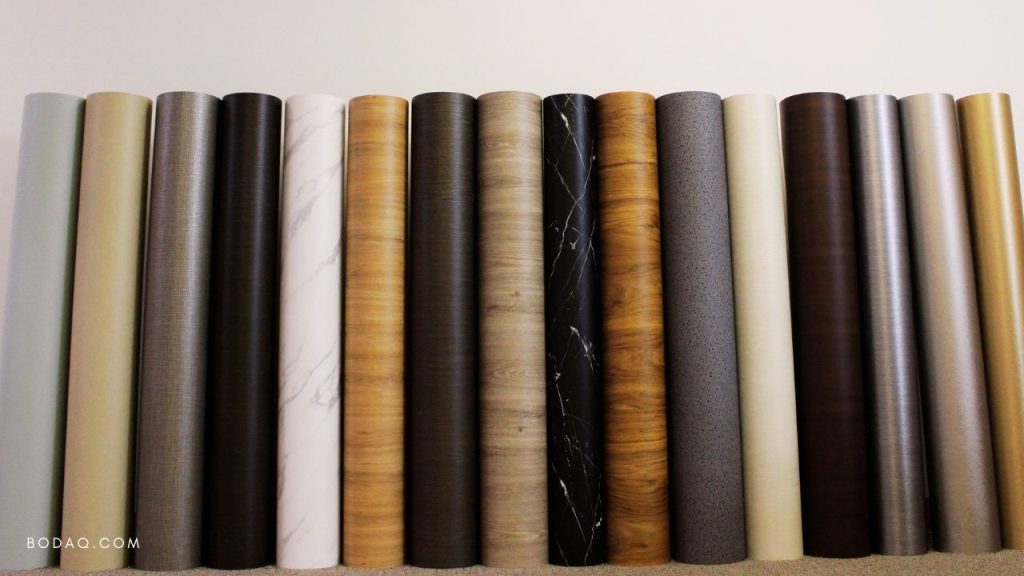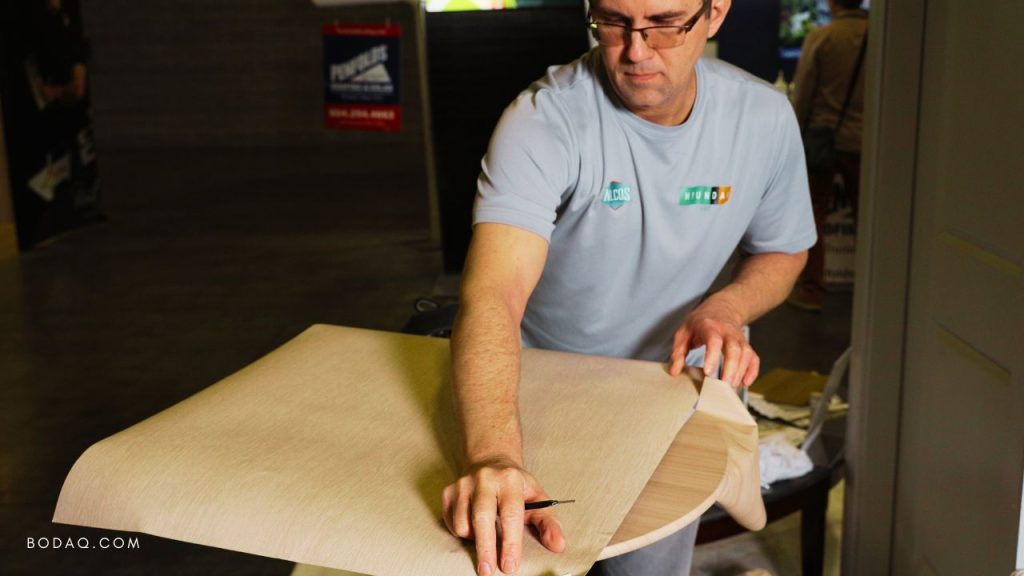How to Clean and Maintain Architectural Film: Tips and Techniques
Table of Contents
Architectural film is a versatile material that is commonly used in building design and construction to achieve specific aesthetic and functional goals. However, like any other material used in construction, architectural film requires proper cleaning and maintenance to ensure it continues to perform as intended and maintain its appearance over time.
In this post, we will provide tips and techniques for cleaning and maintaining architectural film, including step-by-step instructions for cleaning, and tips for ongoing maintenance. Whether you are a building owner, architect, or contractor, these tips will help you keep your architectural film looking its best for years to come.
Understanding Architectural Film
Architectural film is a specialized material that is used in building design and construction to achieve specific visual and functional goals. Also known as surface film or decorative film, architectural film is a thin, flexible material that is applied to various surfaces such as walls, ceilings, doors, and furniture to create a unique and customized appearance.
Properties of Architectural Film
Architectural film comes in a wide range of colors, patterns, and textures. Some of the key properties of architectural film include:
Durability
Film is highly resistant to scratches, impacts, and abrasions, making it ideal for high-traffic areas and other demanding environments.
Versatility
It can be applied to a variety of surfaces, including flat, curved, and irregular shapes, allowing for maximum design flexibility.
Easy installation
Ease of installation is guaranteed by a self-adhesive backing, which eliminates the need for special tools or adhesives.
Low maintenance
Interior film is easy to clean and maintain, requiring only periodic cleaning to maintain its appearance and performance.
Using Architectural Film in Building Design
Architectural film is often used in building design to achieve a wide range of visual and functional effects. Some common applications of architectural film include:
Interior design
Decorative films help create unique and customized interiors, such as adding a woodgrain finish to a plain wall.
Branding
Architectural film is a perfect background for incorporating branding elements into a building’s design, such as applying a company logo or color scheme to a reception area or conference room.
Privacy
Interior films help create privacy screens or partitions, for example, by adding a decorative film to a glass door or window.
Cleaning Architectural Film
Preparing for Cleaning Architectural Film
Before cleaning architectural film, it’s important to take a few key steps to prepare the surface and ensure that the cleaning process is safe and effective. Here are some key steps to follow:
Check for damage: Before cleaning, inspect the surface of the film for any signs of damage, such as scratches, tears, or discoloration. If you notice any damage, consult the manufacturer’s guidelines for repair or replacement before cleaning.
Gather cleaning supplies: Depending on the level of soiling, you may need a variety of cleaning supplies, such as a mild detergent, a non-abrasive sponge, a soft cloth, and/or a squeegee. Be sure to gather all necessary supplies before starting the cleaning process.
Test a small area: Before cleaning the entire surface, it’s important to test a small, inconspicuous area of the film to ensure that the cleaning product or method will not cause any damage or discoloration. Wait for the test area to dry completely before proceeding with cleaning.
Step-by-Step Instructions for Cleaning Architectural Film
Here are a few steps to follow.
Dilute the cleaning solution
Mix a small amount of mild detergent with warm water in a bucket or spray bottle, following the manufacturer’s instructions for dilution. Avoid using harsh or abrasive cleaning products, as these can damage the film.
Apply the cleaning solution
Use a non-abrasive sponge or soft cloth to apply the cleaning solution to the surface of the film, working in a circular motion from top to bottom. Be sure to cover the entire surface, including any edges or corners.
Let the solution sit
Allow the cleaning solution to sit on the surface for a few minutes, but avoid letting it dry completely.
Rinse with clean water
Rinse the surface with clean, warm water, using a squeegee or soft cloth to remove any excess water. Be sure to rinse thoroughly to remove all traces of the cleaning solution.
Dry the surface
Use a soft, dry cloth to pat the surface dry, starting at the top and working your way down. Avoid using a harsh or abrasive cloth, as this can scratch the film.
Inspect the surface
Once the surface is dry, inspect it for any remaining dirt or stains. If necessary, repeat the cleaning process or use a specialized cleaner for tougher stains or soiling.
Tips for Removing Tough Stains
While regular cleaning can help prevent most stains on architectural film, some tough stains may require specialized cleaners or techniques to remove. Here are some tips for removing tough stains from architectural film:
Oil-based stains
Get rid of oil-based stains, such as grease or oil, with a small amount of isopropyl alcohol or specialized cleaner to the affected area and wiping it away with a soft cloth.
Ink or marker stains
Clean stains from ink or marker by applying a small amount of rubbing alcohol or specialized cleaner to the affected area and gently rubbing it away with a soft cloth.
Paint or adhesive stains
For paint or adhesive stains use a specialized solvent or cleaner, following the manufacturer’s instructions carefully. Be sure to test the cleaner on a small, inconspicuous area of the film first to ensure that it doesn’t damage the film.
Water stains
Remove water stains by applying a small amount of vinegar or specialized cleaner to the affected area and wiping it away with a soft cloth. Be sure to rinse the area thoroughly with clean water and dry it well to prevent future water stains.
Maintaining Architectural Film
Proper maintenance and care are essential for ensuring the long-term performance and appearance of architectural film. Here are some tips for maintaining and caring for your architectural film on a regular basis:
- Regular cleaning
Regular cleaning is important for removing dirt, dust, and other debris that can accumulate on architectural film over time. Clean the film with a soft cloth or sponge and a mild, non-abrasive cleaner, such as a solution of water and dish soap. Be sure to rinse the film thoroughly with clean water and dry it well to prevent water stains.
- Avoid harsh chemicals
Harsh chemicals, such as bleach, ammonia, or acidic cleaners, can damage or discolor architectural film. Avoid using these types of cleaners on your film and stick to mild, non-abrasive cleaners.
- Avoid direct high heat
Direct high heat, such as placing hot pot right from the stove directly on the film, can cause architectural film to warp, bubble, or discolor.
When to Seek Professional Assistance
While regular maintenance and cleaning can help prevent damage to architectural film, there may be situations where professional assistance is necessary to address issues or perform repairs. Here are some situations where you may want to consider seeking professional assistance for your architectural film:
Significant damage
If your architectural film has sustained significant damage, such as large tears, holes, or extensive discoloration, it may be beyond your ability to repair it yourself. In these cases, it may be best to seek professional assistance to assess the damage and recommend the best course of action.
Warranty issues
If your architectural film is still under warranty, any issues or damage should be addressed by a professional authorized by the manufacturer. Attempting to repair or replace the film yourself may void the warranty and result in additional costs or complications.
Film installation
If you are planning an installation of architectural film, it is best to seek professional assistance to ensure a proper installation and minimize the risk of damage or errors.
Conclusion and Final Thoughts
In conclusion, architectural film is a versatile and cost-effective solution for enhancing the appearance and functionality of various architectural surfaces. With proper care and maintenance, architectural film can last for many years and provide a high level of performance and durability.
By following the tips outlined in this article, such as properly cleaning the film, avoiding harsh chemicals and physical damage, and seeking professional assistance when necessary, you can help ensure that your architectural film continues to perform well and maintain its appearance over time.
Manufacturer’s instructions
Remember to always follow the manufacturer’s instructions and recommendations for caring for your specific type of architectural film, and to address any issues or concerns promptly to prevent further damage or deterioration.
Whether you are using architectural film for a commercial or residential project, it is important to take the necessary steps to care for and maintain it properly. With the right care and maintenance, your architectural film can continue to provide a cost-effective and attractive solution for enhancing the appearance and functionality of your space for years to come.
FAQ about How to Clean and Maintain Architectural Film
- What is architectural film?
Architectural film is a thin, flexible material that is used to cover surfaces such as walls, floors, furniture, and appliances. It is often used as an alternative to traditional materials such as paint, wallpaper, or tiles.
- How do I clean architectural film?
To clean architectural film, start by dusting the surface with a soft cloth or vacuuming it with a soft brush attachment. Then, use a mild detergent and warm water to wipe down the surface. Avoid using harsh chemicals or abrasive cleaning tools, as these can damage the film.
- Can I use bleach or other harsh chemicals to clean architectural film?
No, you should avoid using bleach or other harsh chemicals to clean architectural film. These chemicals can damage the film and cause it to discolor or peel.
- What should I do if I spill something on architectural film?
If you spill something on architectural film, clean it up as soon as possible with a soft cloth or paper towel. Use a mild detergent and warm water to clean the area, and then dry it with a soft cloth.
- How often should I clean architectural film?
The frequency of cleaning architectural film depends on how frequently the surface is used and how dirty it gets. Generally, it is recommended to clean architectural film every 3-6 months.
- How do I maintain architectural film?
To maintain architectural film, avoid exposing it to direct sunlight or high heat, as this can cause the film to warp or discolor. Also, avoid using sharp objects or dragging heavy items across the surface, as this can scratch or damage the film.
- How long does architectural film last?
The lifespan of architectural film depends on the quality of the film and how well it is maintained. Generally, high-quality architectural film can last for more than 10 years with proper care and maintenance.
















